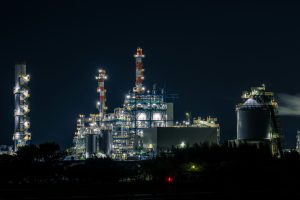Algae-Dyed Denim: Pollution Pigments Rebranding Fast Fashion
Fast fashion has taken the clothing industry by storm, providing consumers with trendy, affordable clothing at an alarming pace. However, this has come at a significant cost to the environment. From the excessive use of water and chemicals to the production of synthetic fabrics, the fashion industry has been a major contributor to pollution. But what if there was a way to reinvent fast fashion and make it more sustainable? Enter algae-dyed denim, a new technology that is redefining the future of fashion. In this article, we will explore how pollution pigments are giving fast fashion a much-needed rebranding.
The Rise of Fast Fashion and its Environmental Impact
Fast fashion is the rapid production and consumption of inexpensive clothing that is designed to keep up with the latest trends. This phenomenon has revolutionized the clothing industry, making fashion accessible to the masses. However, the need to keep up with ever-changing fashion trends has resulted in an increase in textile and clothing waste. According to the Environmental Protection Agency (EPA), the average American throws away around 80 pounds of clothing each year, contributing to the 92 million tons of textile waste that ends up in landfills annually.
But it’s not just the waste that is a concern. The production of fast fashion also has a significant impact on the environment. The fashion industry is the second-largest consumer of water, and the production of cotton, the most widely used fabric in clothing, requires vast amounts of water. Additionally, the chemicals used in dyeing and finishing textiles are a major source of water pollution. It’s clear that fast fashion is not sustainable, and something needs to change.
The Solution: Algae-Dyed Denim
Algae-dyed denim is the latest innovation in sustainable fashion. It involves using algae, a plant-like organism found in water, to dye fabrics. Algae has been shown to have a natural ability to absorb and retain color, making it an ideal alternative to synthetic dyes. This process requires minimal water and chemicals, making it a much more environmentally friendly option. Additionally, algae-dyed denim has the potential to be biodegradable, further reducing its environmental impact.
The algae used in this process is sourced from polluted waterways, giving it a dual purpose of both cleaning up the environment and providing a sustainable dyeing solution. This technology has the potential to transform the fashion industry and revolutionize the way we think about sustainability in fashion.
Collaborations and Impact
Several fashion brands have already jumped on the algae-dyed denim trend, with collaborations between designer Scarlett Yang and the Algea project, as well as between the University of California, Davis and denim brand Everlane. These collaborations have resulted in unique and eye-catching designs, exposing consumers to the possibilities of sustainable fashion.
But the impact of algae-dyed denim goes beyond just the fashion industry. The use of algae to clean up polluted waters has the potential to improve the health of aquatic ecosystems, provide new jobs for communities, and reduce the carbon footprint of the fashion industry.
Challenges and Future Outlook
As with any new technology, there are still challenges to be overcome in implementing algae-dyed denim on a large scale. One of the main challenges is the cost, which is currently higher than traditional synthetic dyes. However, as the technology advances and becomes more widespread, the cost is expected to decrease.
Furthermore, consumer education and awareness are crucial in driving the demand for sustainable and eco-friendly fashion. As more consumers become aware of the impact of fast fashion, there is a growing trend towards ethical and sustainable fashion choices. Brands that adopt this technology and promote it to their customers are likely to see a positive response from consumers.
In Conclusion
Algae-dyed denim is a revolutionary technology that has the potential to change the fast fashion industry for the better. It offers a sustainable solution to the environmental issues caused by traditional dyeing processes and has the potential to create a positive impact on both the fashion industry and the environment. It’s time for the fashion industry to embrace this innovative technology and make a real change towards a more sustainable future.










